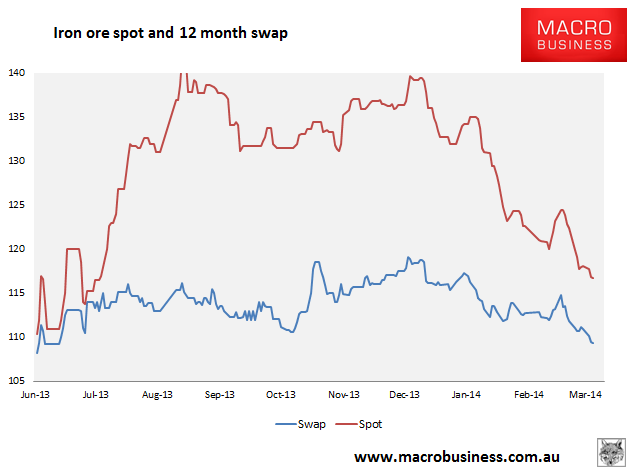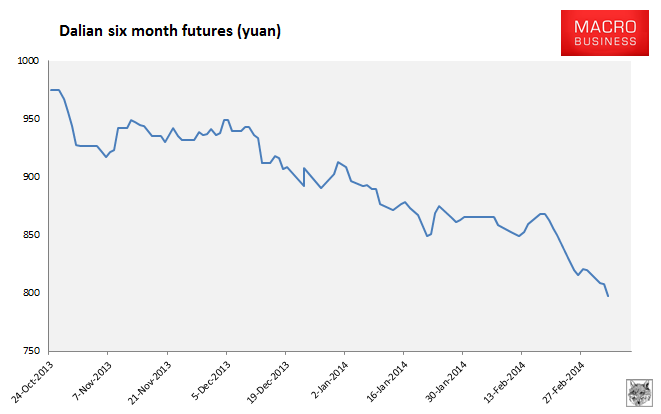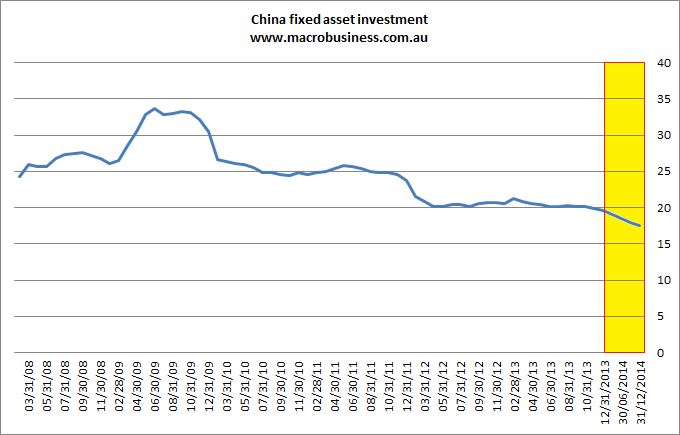Here are the iron ore charts for March 5, 2013:



Be aware that Dalian six month futures were largely flat on the day but I’ve shifted out to the September contract. Rebar futures are bouncing along the bottom.
More of the same, then, with malaise broad-based. In any market of the past the commitment to a promising growth figure by Chinese authorities would have fired off a rally. Not this time, probably because the devil was in the detail. The pledge to keep growth at “about 7.5%” also came with a commitment to sharply reduce fixed-asset investment growth to 17.5% and maintain M2 growth rates at 13%, which is slightly below the current level already causing the growth squeeze. That equals a pretty meaty hit to building and commodity demand, forecast in yellow:

There was also a strong commitment to ending pollution which is generated out of the old industrial economy. It’s not clear how the CCP intends to maintain headline growth with the other growth goals in mind. The safest assumption, I think, is that the Chinese will continue to squeeze the fixed-asset economy until it has an event of some kind and then stimulate with a focus in new industries and environmental amenity.
That means material downside from here yet for iron ore. Reuters has more:
“There are a lot of sellers competing for a few buyers and these traders are in a rush to sell before prices go further down,” said an iron ore trader in China’s eastern Shandong province, who thinks there may be enough momentum for prices to go below $100 a tonne.
Chinese Premier Li Keqiang said at the opening of Beijing’s annual meeting of parliament that the government would “declare war” against pollution. Part of that effort includes eliminating outdated energy producers and industrial plants.
China will cut outdated steel production capacity by a total of 27 million tonnes this year, Li said, although that only amounts to less than 2.5 percent of the country’s total, and industry officials have warned that plants with another 30 million tonnes of annual output went into construction last year.
There’s no panic yet in prices and those steel capacity cuts are tiny but its the economy that’s doing the damage to steel:
“Traders are suggesting transaction volumes are one-third of their normal levels,” Standard Bank said in a note, adding that total steel stocks in China rose 2 percent from the previous week to 19.44 million tonnes.

